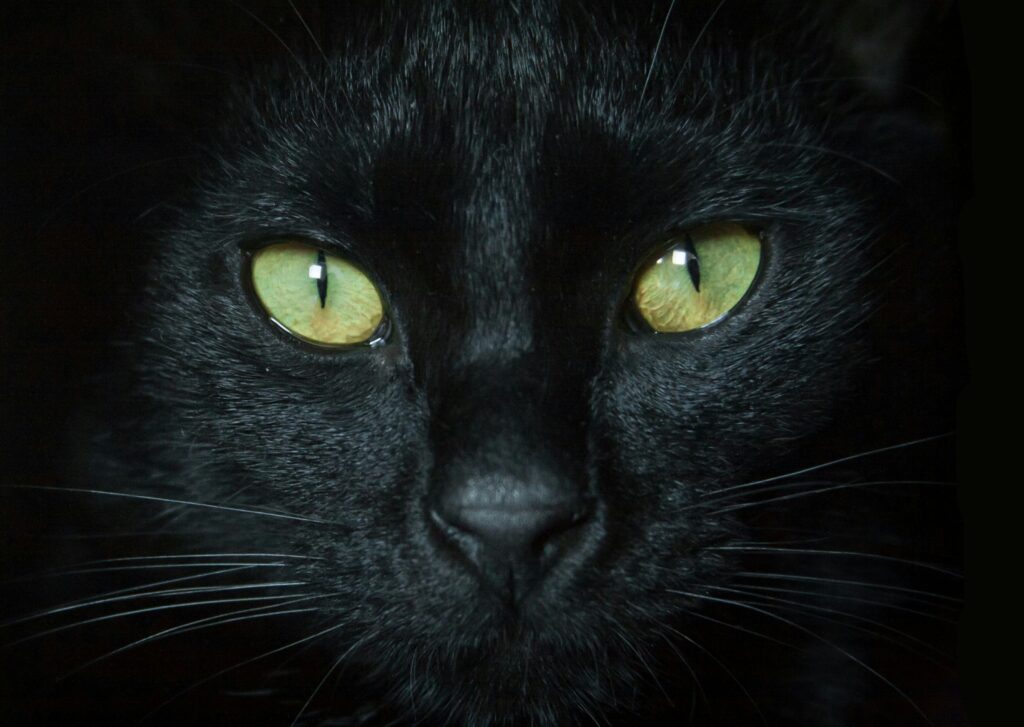November 9 marks the International Day Against Fascism and Antisemitism, a date that commemorates Kristallnacht, the “Night of Broken Glass,” when Nazi mobs burned synagogues, destroyed Jewish-owned shops, and unleashed a wave of violence that signaled the beginning of the Holocaust. It is a day for remembrance, but also for vigilance. Because the ideas that led to such hatred never vanish completely. They resurface, sometimes quietly, sometimes in new disguises. This year, I found myself thinking about these themes through an unexpected book: The Last Black Cat by Eugene Trivizas.
As a cat lover, and someone lucky enough to share my life with a beautiful black cat, this story hit me straight in the heart. On the surface, it is a fable about cats. But beneath its playful opening lies one of the clearest, most chilling allegories for racism, discrimination, and scapegoating I’ve ever read in a so-called “children’s book.”
Trivizas begins gently, but soon, the world of the story darkens. The black cats become targets of superstition and hate, blamed for every misfortune, hunted, and exterminated “for the good of society.” Through the eyes of the last surviving black cat, we witness how easily fear becomes ideology, and ideology becomes violence. This book is not about cats. It is about us.
It is about how societies invent “others,” how difference becomes danger, and how ordinary people can come to accept cruelty as normal. The parallels to antisemitism, racism, xenophobia, and every form of systemic hatred are unmistakable. And it is all the more devastating because the narrator’s voice is so innocent, confused, tender, and still believing in goodness even as the world collapses around him.
When I look at my own black cat, soft, playful, utterly harmless, I think of how absurd and yet how frighteningly real prejudice can be. For centuries, black cats have been misunderstood and feared. Trivizas reminds us that this is not just about superstition. It is about the human tendency to blame, to fear, to destroy what we don’t understand.
The Last Black Cat is a haunting story that lingers long after the last page. It is simple enough for children, but its message is urgent for adults. We are still living in a world where propaganda thrives on division, where some lives are deemed less worthy than others, and where fear continues to masquerade as moral order.
Toward the end of the book, the narrator reflects: “How could everything that happened, happen? I ask myself, and I try to convince myself that something like that could never happen again. But somewhere, deep in my heart, I know that here, on our island, as everywhere, people forget, cats forget, madness needs very little to break out again, starting all over, from the beginning, if it must be…”
These final words are haunting because they are timeless. They remind us that the greatest danger is not hatred itself, but forgetting where it leads. And lately, it is hard not to feel that same unease stirring again. Across the United States, we have seen the rise of rhetoric that blames the vulnerable, distorts truth, and divides communities. We have watched how easily fear is manipulated into policy, how compassion is branded as weakness, and how violence begins, always, with language. Just as in Trivizas’s fable, madness needs very little to begin again.
On this International Day Against Fascism and Antisemitism, I think about the courage it takes to resist hate, not with grand speeches, but with small acts of empathy. With listening. With remembering. With teaching stories like this one.
Because sometimes the most powerful lessons about humanity come from the smallest, furriest survivors.
Reference
Eugene Trivizas, The Last Black Cat (translated by Diane Shugert, Bloomsbury Publishing, 2012).

